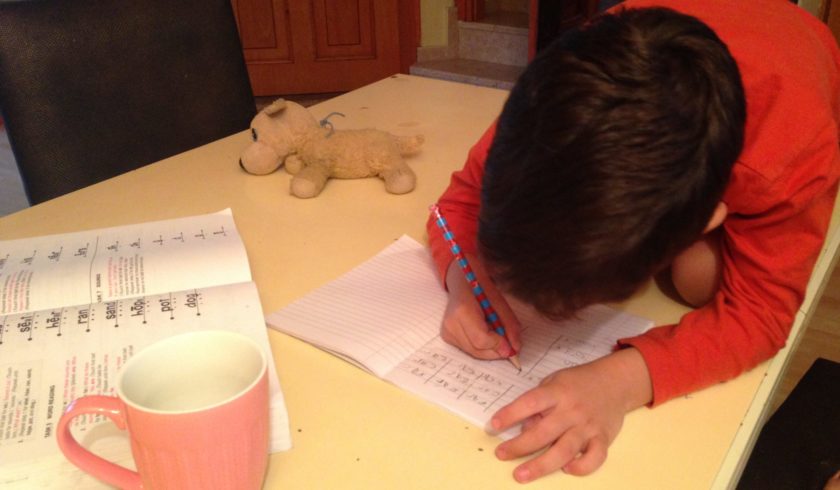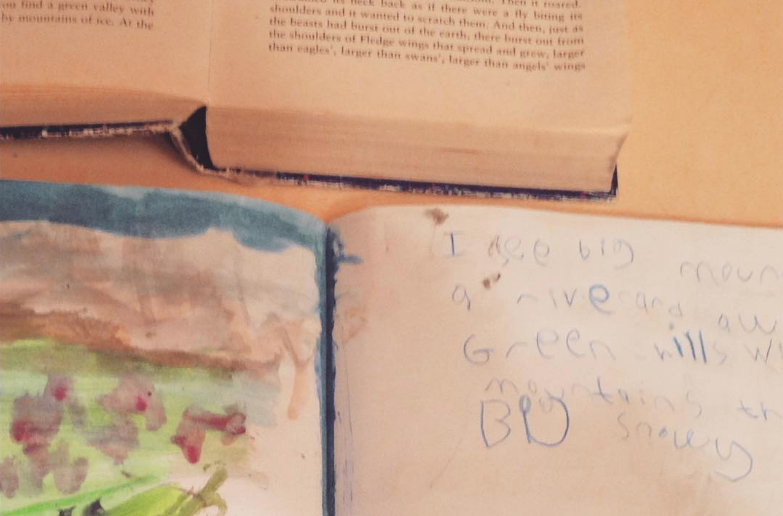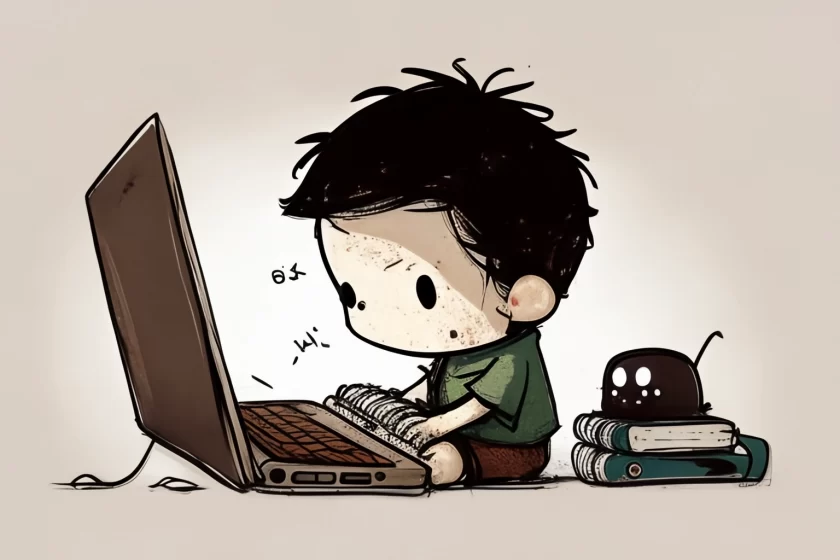Letter formation is key to learning to write but for some children, using a pen to write on paper isn’t a skill that comes naturally. Learning to type can help make the process of actually ‘writing’ – or getting the words out – easier.
Typing isn’t lazy writing
Writing in any form requires the brain to complete two separate (connected) activities at once: The act of actually putting words down on paper/a screen (taking care with spelling, grammar etc) ; and the process of transferring knowledge into words. If a child is uncomfortable holding a pen, is dyslexic, has difficulty remembering the spellings of words or struggles with letter formation, completing those tasks are a full-brain lesson in themselves – even after they’ve learnt the skill itself. If a lesson requires them not only to do all of those things but also asks them to choose which words to use, the lesson can become overwhelming.
If you’re comfortable with the alphabet’s positioning on a keyboard (the keyboard layout), pressing one letter key is much easier than holding the pen, applying the right amount of pressure onto the paper, shaping the word and spelling it simultaneously. Typing takes the pressure off the act of writing because letter formation is done by the keyboard. The part of the learner’s focus that would have been occupied with letter formation is now available to concentrate on choosing the words they’re putting down.
Typing can make it easier for a child struggling with handwriting, a skill that takes time to master, to express themselves without being held back by a developing skill set.

When we write with a pen, our brain has to focus on the formation of the letters as well as the words we’re writing. Young learners who are struggling with the actual handwriting, can easily loose their train of thought, get distracted from the task and once distracted, find it difficult to come back to the task.
Copy work is a useful handwriting tool because it allows home learners to focus only on the formation of the letters, not the words the letters form. Using a keyboard helps remove pressure from the act of writing in a similar way to copy work.
When using a keyboard to write, learners are able to concentrate on what, not how they’re writing because the keyboard does the letter formation for them! Confident typers are able to focus on the purpose of writing – expressing themselves – without thinking about the motor skill sets handwriting requires of them using a pen.
Allowing our 10 year old home learner to type any written school work that required him to choose the words (answering non-fact based questions/writing stories/book reviews etc), and encouraging him to practice handwriting in different, small-burst ways, changed how he felt about writing. Far from typing making him a lazy writer, it’s made him
- a more focused, productive ‘writer’ (when transferring his own thoughts/knowledge from head to page)
- and a happier writer, which in turn has (passively) improved his handwriting.
Because he’s more confident, he’s more focused and because he’s more focused, lessons run smoother. Lessons that would take 40 minutes, now take 20-25 and are enjoyable for him and me.
Ratatype is a great resource for learners to practice learning to type independently, and for home educators to use for typing ‘lessons’ in the classroom to improve home learners type speed and accuracy.

Removing the focus from handwriting during lessons where handwriting is not the objective of the lesson, can revive enthusiasm to improve handwriting in lessons where the focus is the handwriting.
Simple copy work exercises are short burst lessons that don’t feel intensely handwriting focused, yet are. Ask homeschoolers to copy out
- a chapter/page from a book they’ve read and enjoyed,
- a context-relevant passage from a book that’s on the ‘to be read/studied pile’,
- a snippet from a book that’s too old (content wise) for them to read in its entirety yet
- an interesting section of a magazine article
- the script of a favourite TV show episode
- the lyrics of a song…
..the copy work can be anything that will interest the writer.
Poems are great copy work activities for handwriting and typing is a fun way to write poetry: When typing a poem, it is super easy to play with the shape of the poem on the page and can help learners find the fun in playing around with poetry forms.
Celebrate a homeschooler’s progress and commitment
Keeping examples of homeschoolers’ written work to bring out and look at at intervals is a great way to show (and passively continue to remind) homeschoolers how much they’ve progressed. Decorate the fridge with handwriting they’re proud of, make a collage wall of great work in the homeschool classroom, share with family and friends.
If homeschoolers use an online programme to learn to type, congratulate them when they finish the course! Canva is a great (simple to use) tool to use to make certificates to recognise homeschoolers achievements, though a celebratory afternoon off school or a trip out for ice-cream work just as well as recognition.
Being a skilled typist can make school work easier for students who struggle with writing by hand, however making typing the default way to write in the classroom takes away the opportunity for students to decide for themselves to practice handwriting.
When the objective of the task itself is to share knowledge or express themselves, allowing learners choices with how they complete lesson tasks is a good way to make home education feel like a team effort – they are a part of a team and they have an input into the way lessons run. Adding new pens (or quills) to lesson-time pen supplies might help encourage pupils to choose to write instead of type, but the choice to type or handwrite can be theirs.
If only one day in ten a homeschooler chooses a pen over the keyboard, that one day is a day they choose to make the lesson slightly more difficult for themselves, tackling a skill alongside whatever the lesson objective may be: That’s fantastic! Encouraging small steps like this motivates learners to take bigger ones.
If your homeschooler is struggling with handwriting, Help with Handwriting offer online classes using similar principles of short bursts of writing and the teaching style of a one-to-one tutor. There is a Handwriting Kick Starter course available to download for free which is a good way to see if the style of teaching is a good match for your learner before committing to any of the classes.

